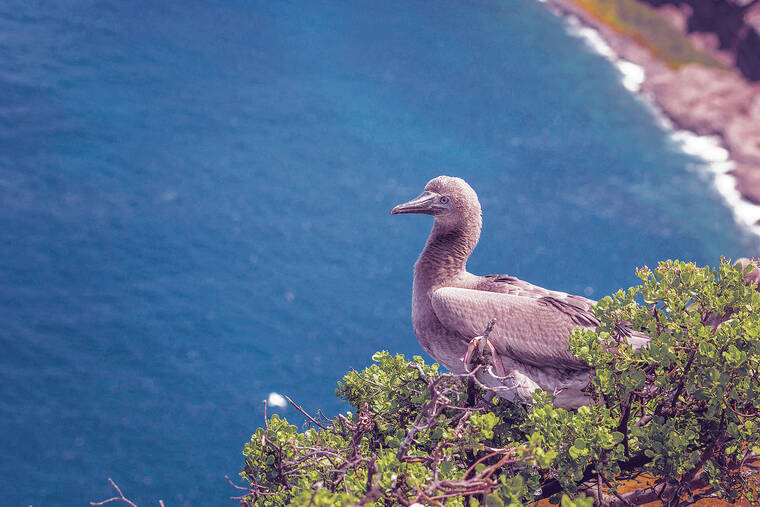LIHU‘E — Kaua‘i habitat and endangered species were reviewed by the state Department of Land and Natural Resources during an informational briefing before the state Senate Committee on Water and Land last week.
DLNR Division of Forestry and Wildlife and Division of Aquatic Resources personnel discussed the conditions of native wildlife and related projects throughout Hawai‘i, including initiatives on Lehua island and the Mana Plains on the Westside.
“Lehua island … is this incredible place off of Kaua‘i that we’re so delighted, after over a decade of work, to declare rat-free,” DLNR-DOFAW’s Emma Yuen said. “We’ve taken out the rats on this island and taken out the predators, but we still need to do more work to continue to protect these areas.”
The state announced the 284-acre seabird sanctuary was free of invasive, predatory rats in April 2021. The next phase of its Lehua Island Ecosystem Restoration Project will include native-plant restoration, the attraction of more native and endangered seabird species, and “biosecurity” (efforts to prevent rats’ reintroduction to the sanctuary).
“We want to put solar panels and irrigation and add a mooring buoy for management access in this area,” Yuen said, noting DLNR-DOFAW will seek $60,000 in capital improvements projects monies in fiscal year 2023 to fund the project. The state and county fiscal years run from July 1 to June 30.
Yuen also discussed wetlands restoration within the Mana Plains Forest Reserve. The 105-acre site, once restored, is intended as a haven for endangered waterbirds and plant life.
DLNR-DOFAW is making a CIP request of $400,000 for phases two and three of the restoration project.
“That’s to allow the water-delivery systems to create habitat for these waterbirds,” Yuen explained.
Honu population
Experts do not know how many honu, or green sea turtles (Chelonia mydas), constitute the species’ Central North Pacific group, but the number is growing.
“The population is increasing fairly rapidly at 5 to 7% annually, which is huge for a (federal Endangered Species Act) listed species,” DLNR-DAR Protected Species Program Lead Ryan Jenkinson said.
However, the species remains held back by rising sea levels associated with climate change, which are swallowing the turtles’ breeding grounds in the Northwestern Hawaiian Islands.
This phenomenon appears to have sent turtles to the main islands, including Kaua‘i, in recent years, according to Jenkinson.
“There are so many of them showing up and basking where they just come up onto the beach, at places like Ho‘okipa (Maui), Po‘ipu and Laniakea (O‘ahu),” he said. “We have people around these animals that are federally listed, so you’re technically breaking federal law if you’re near them, even if they’re not really that endangered at this point.”
The turtles’ population growth has spurred fisheries and native groups to call upon the state to re-open harvest of honu, according to Jenkinson.
•••
Scott Yunker, reporter, can be reached at 245-0437 or syunker@thegardenisland.com.




It’s scary to think that a leading “marine biologist” surmises that in the NWHI beach breeding areas for turtles is being lost due to climate change. However it’s proven and common knowledge that the oldest islands/atoll’s are sinking.
All the Hawaiian islands are slowly sinking due to geological processes that take millions of years. We will not see any of these islands or atolls sink in our lifetime. Sea water levels are rising at a faster rate than the islands are sinking. The unnaturally high rising sea levels are something that we are seeing within our lifetime and are brought on my the human-impact on the planet. Where as the islands sinking are 100% natural.
Support conservation, buy rare and endangered plants from local nursery to plant. Why should only DOFAW have and not local people. Can ship anywhere. Descreet packaging. Check out inventory rare stuff no can get no place else on earth. Waiola-Nani Nursery https://kauainatives.wixsite.com/nurserydirectory/copy-of-by-plant-genus